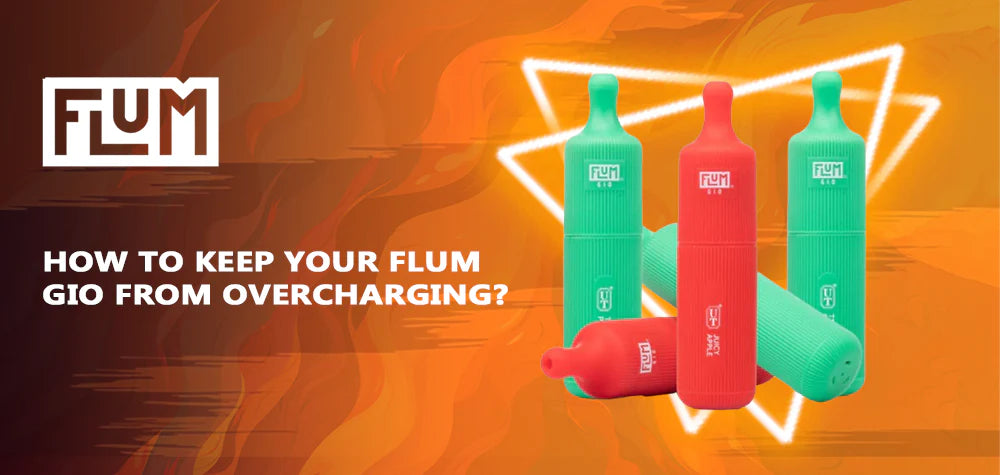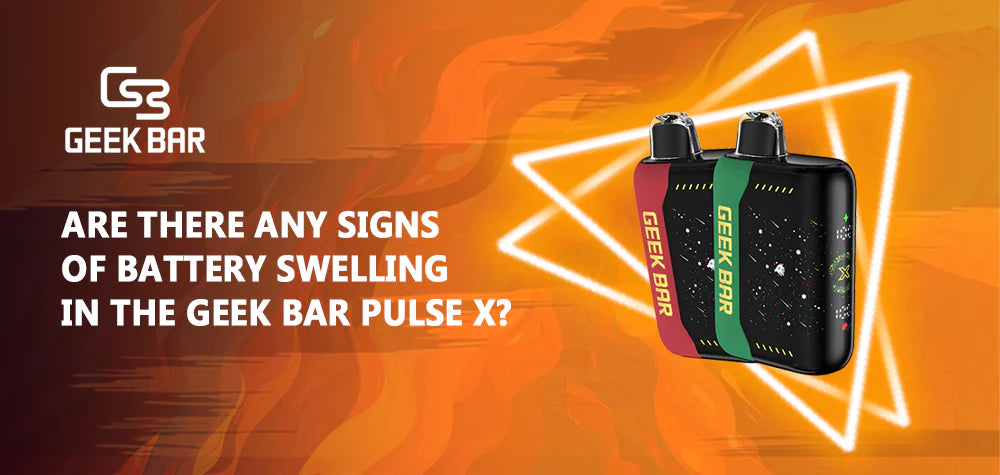
How To Keep Your Flum Gio From Overcharging?
Overcharging happens when a battery continues to receive electrical current after it has reached full capacity. While modern lithium-ion batteries, like the one in your Flum Gio, typically have built-in protections to stop charging once full, leaving the device plugged in for extended periods can still cause stress on the battery cells. This stress can lead to overheating, chemical degradation, and reduced battery efficiency over time.
Repeated overcharging accelerates battery wear, diminishes the total number of effective charge cycles, and can even pose safety risks such as swelling or, in rare cases, thermal runaway. Therefore, avoiding overcharging is not only about preserving battery life but also about ensuring safe use of your vape device.
Recognizing Charging Indicators on Your Flum Gio
The Flum Gio is equipped with LED indicators that provide real-time feedback during charging. When you connect the device to a power source using the appropriate USB-C cable, the LED light will typically illuminate—often red or blue—to show that charging is underway. As the battery approaches full charge, the LED will either change color or turn off completely, signaling that the device is fully charged.
Monitoring these LED signals is vital to prevent overcharging. Once the indicator shows a full charge, disconnecting your Flum Gio promptly helps avoid unnecessary electrical stress on the battery. If the LED does not light up when charging, or if it blinks erratically, it may indicate a problem with the battery, charger, or charging port that requires attention.
Best Practices to Prevent Overcharging Your Flum Gio
To keep your Flum Gio from overcharging, start by using only the charger and USB cable recommended by the manufacturer. Using incompatible or low-quality chargers can lead to irregular power delivery, which may confuse the device's charging circuitry and increase the risk of overcharging or battery damage.
It is advisable to charge your device in a stable environment at room temperature, avoiding extreme heat or cold, which can exacerbate battery stress during charging. The typical charging time for the Flum Gio ranges from one to three hours depending on battery level. Setting a timer or reminder to unplug the device shortly after it reaches full charge can be an effective way to prevent overcharging.
Additionally, avoid charging your Flum Gio overnight or leaving it plugged in unattended for long durations. Although the device's internal protections help, habitual overcharging still wears down the battery faster.
Maintaining the Charging Port and Device for Optimal Charging
A clean and well-maintained charging port is essential for proper power transfer and preventing charging issues that might cause overcharging symptoms. Over time, dust, lint, and debris can accumulate inside the charging port, obstructing the connection between the charger and the device.
Using the right tools needed to clean the charging port—such as a can of compressed air, a soft-bristled brush, wooden or plastic toothpicks, and cotton swabs lightly moistened with isopropyl alcohol—can help you safely remove debris without damaging the delicate internal components. Regular cleaning ensures a stable connection, allowing the Flum Gio's charging circuitry to accurately detect battery status and stop charging at the right time.
Avoid using metal objects or excessive moisture when cleaning, as these can cause short circuits or corrosion. Keeping the charging port clean also prevents erratic LED behavior or slow charging, which might tempt users to overcharge the device.
Troubleshooting Common Charging Problems to Avoid Overcharging
If your Flum Gio shows signs of improper charging—such as the LED not lighting up, blinking irregularly, or the device overheating—inspect the charging setup carefully. First, check the charging cable and power source for damage or incompatibility. Trying a different certified charger can help isolate the issue.
Next, examine and clean the charging port as described above. Dust or lint blocking the port can cause poor contact, leading to incomplete charging cycles or false LED signals that might cause you to leave the device plugged in longer than necessary.
If problems persist after these steps, the battery itself may be deteriorating or the device could have internal faults. In such cases, contacting customer support or seeking professional repair advice is recommended to prevent unsafe charging conditions.
Additional Tips for Battery Longevity and Safety
Beyond preventing overcharging, maintaining your Flum Gio's battery health involves other good practices. Avoid letting the battery drain completely before recharging, as lithium-ion batteries perform best when kept between moderate charge levels. Store your device in a cool, dry place away from direct sunlight and humidity, which can degrade battery materials.
Regularly inspect your device and charging accessories for signs of wear or damage, and replace cables or chargers if necessary. These habits, combined with vigilant monitoring of charging indicators and timely disconnection, will help keep your Flum Gio's battery in excellent condition.
Conclusion
Preventing overcharging is a fundamental part of caring for your Flum Gio vape device. By understanding the device's LED charging indicators, using recommended chargers, charging in appropriate environments, and maintaining a clean charging port with the proper tools needed to clean the charging port, you can avoid unnecessary battery stress and extend the lifespan of your device.
Adopting these professional charging habits not only safeguards your investment but also ensures a safer and more reliable vaping experience. Regular attention to charging practices and device maintenance will keep your Flum Gio performing at its best for years to come.


